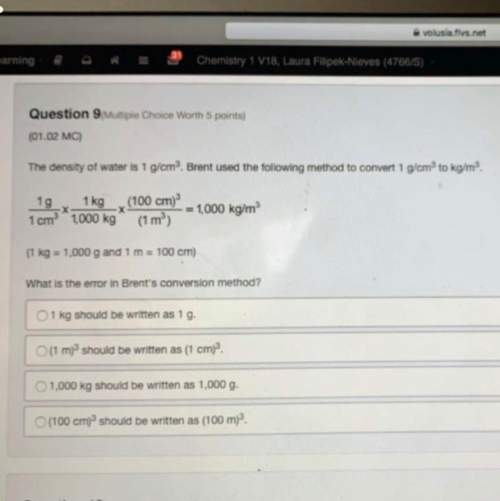
Chemistry, 06.04.2021 02:10 jackieericksonpdub87
ROAD MAP. A, B, and C are alkyl iodides with a molecular formula of C6H11I. Both compounds A and B react with Na - OCH3 in DMSO to give the same trisubstituted alkene DO. Both compounds B and C react with DBU in DMF to give disubstituted alkene E. Compound A reacts very slowly with CH3OH to give ether F and a small amount of alkene D. Compound B reacts much faster with CH3OH than compound A to give a different ether G along with alkene D. However, both compounds A and B do not react with strong nucleophiles like NaN3. In contrast, compound C readily reacts with NaN3 in DMF to give compound H. Give the structures of compounds A-H on the next page.

Answers: 2


Another question on Chemistry

Chemistry, 22.06.2019 00:00
Several kinds of bears are found on earth. most bears are brown or black, but one type of bear, the polar bear, is white. what process led to this difference in fur color? explain your answer.
Answers: 1

Chemistry, 22.06.2019 09:00
What is the percentage composition of carbon in the compound ch4
Answers: 1

Chemistry, 22.06.2019 12:00
In a laboratory, 1.55mg of an organic compound containing carbon, hydrogen, and oxygen is burned for analysis. this combustion resulted in the formation of 1.45mg of carbon dioxide and .89 mg of water. what is the empirical formula for this compound?
Answers: 1

Chemistry, 23.06.2019 01:30
If a particle has z = 25 and 23 electrons, what is its charge?
Answers: 2
You know the right answer?
ROAD MAP.
A, B, and C are alkyl iodides with a molecular formula of C6H11I. Both compounds A and B...
Questions

Mathematics, 18.08.2019 17:10

Mathematics, 18.08.2019 17:10

Social Studies, 18.08.2019 17:10



Chemistry, 18.08.2019 17:10

History, 18.08.2019 17:10


Mathematics, 18.08.2019 17:10

Health, 18.08.2019 17:10



Mathematics, 18.08.2019 17:10

Physics, 18.08.2019 17:20

Biology, 18.08.2019 17:20

Biology, 18.08.2019 17:20

Mathematics, 18.08.2019 17:20


Mathematics, 18.08.2019 17:20




